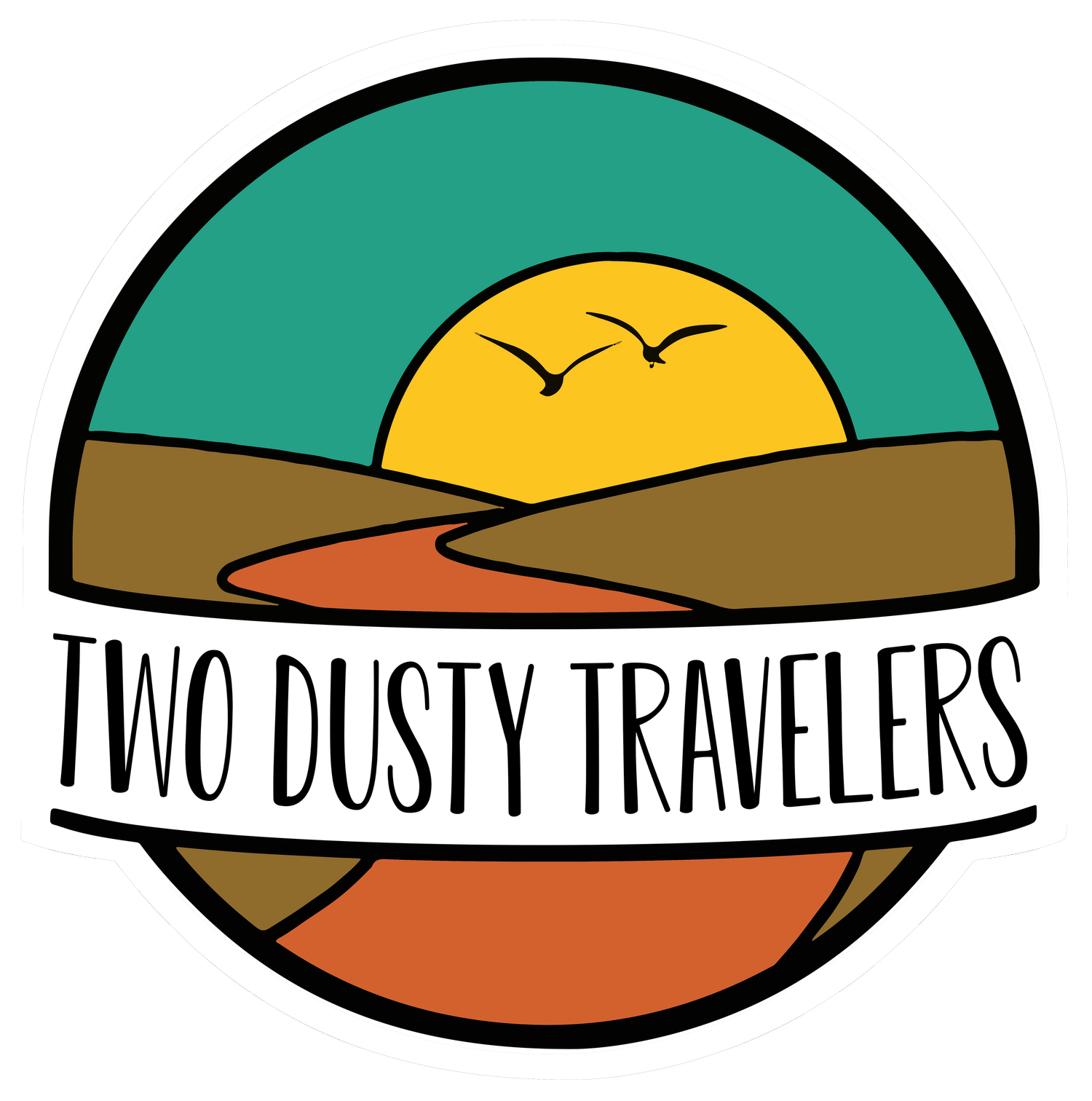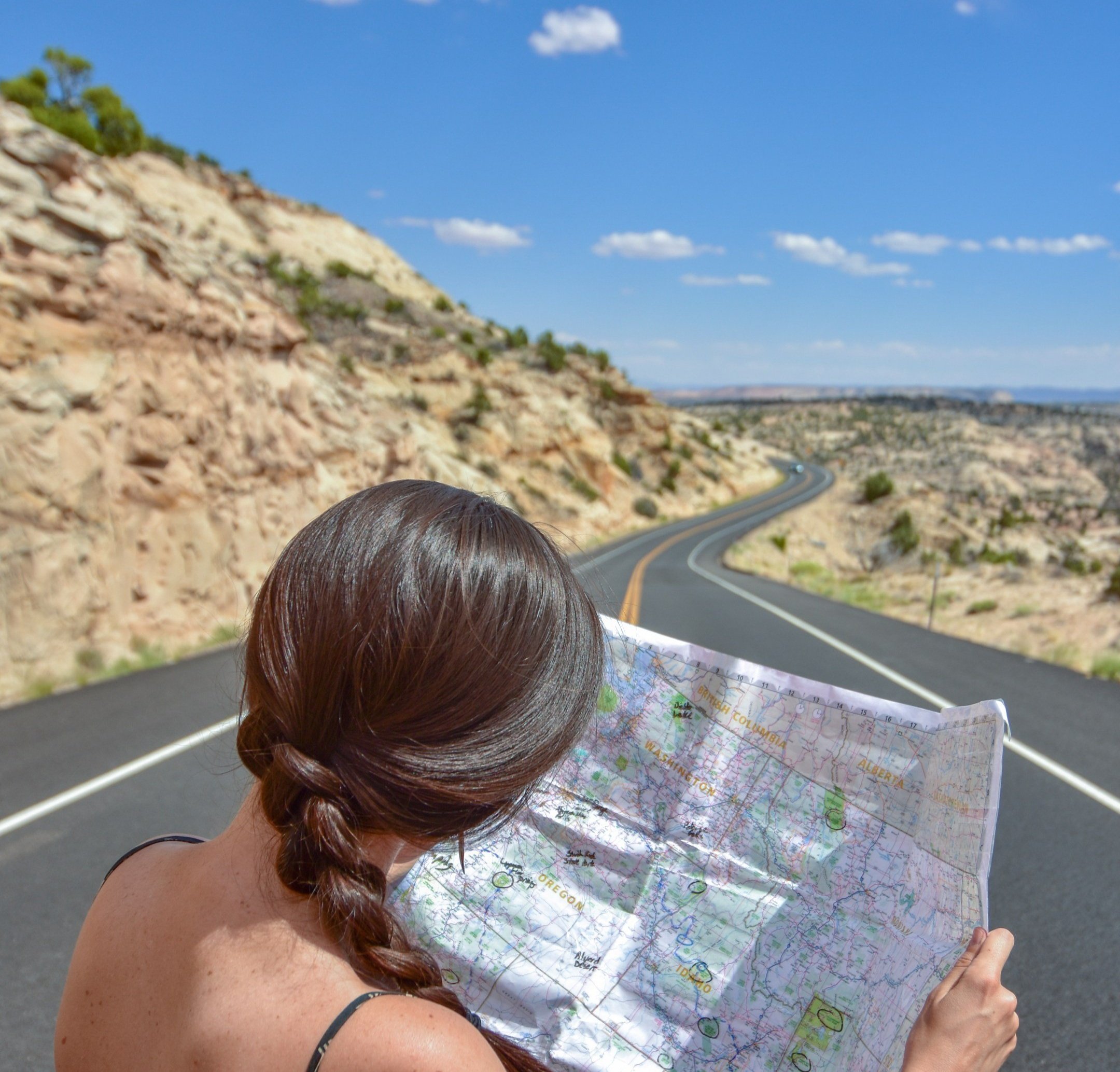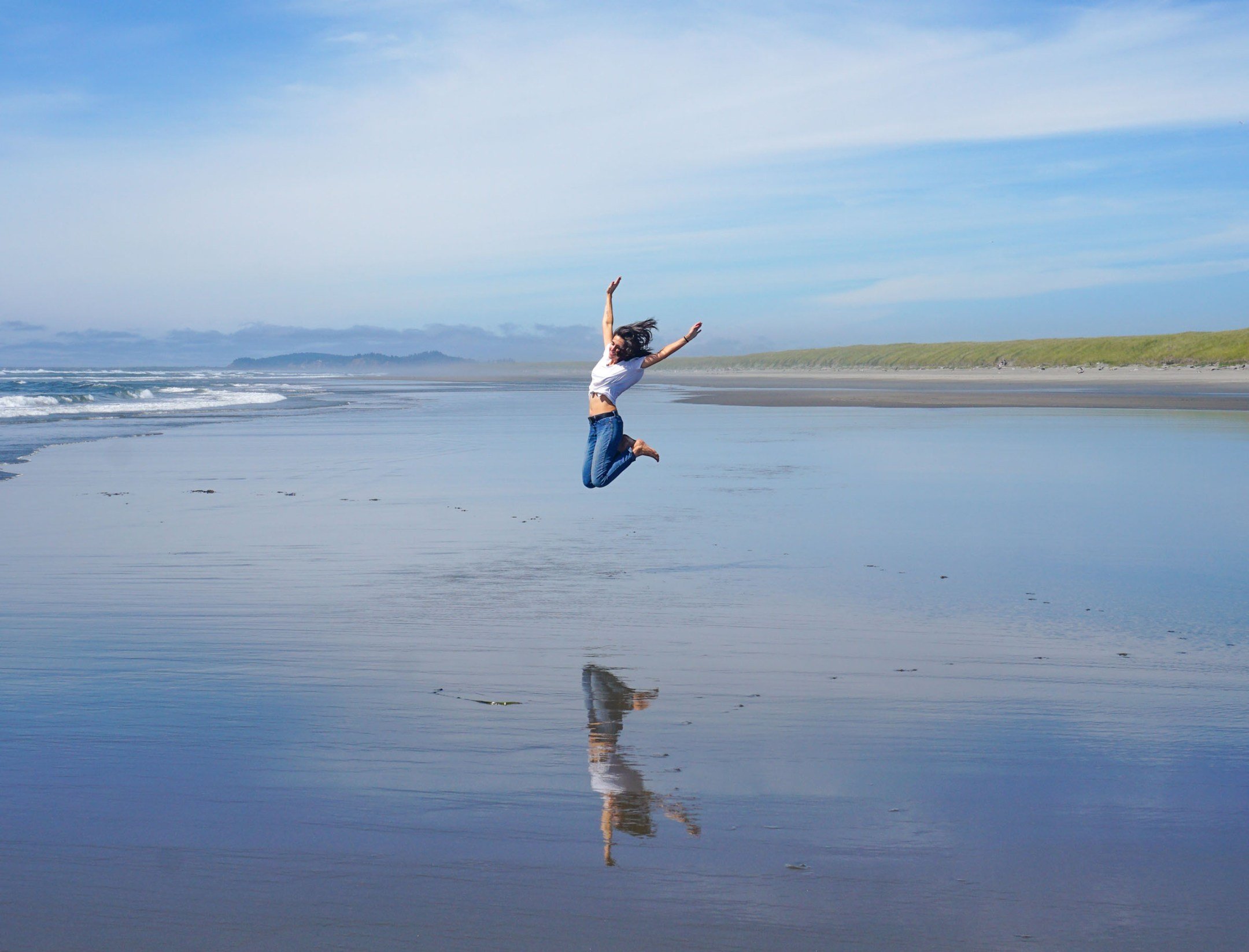Top Things to Do in Nairobi for Ethical Travelers
Finding things to do in busy, sprawling Nairobi can feel overwhelming at first. It’s a city that many tourists rush through because it’s labeled “dangerous” – but also a place we’ve come to love deeply.
Fortunately, there are plenty of things to do in Nairobi for responsible travelers! Steer clear of the exploitative slum tours and orphanage volunteering, and instead spend your tourist dollars to support local business and see a more well-rounded view of Nairobi.
Here are our favorite things to do in Nairobi for ethical travelers:
Day Tour with One Horizon
This meaningful tour allowed us to access communities that many travelers never see, in a way that felt respectful rather than voyeuristic. The profits from tour fees go to local non-profit One Horizon, which works with vulnerable women in Nairobi. It was clear that this group is passionate about using tourism to improve lives in Kenya through genuine human connections.
We spent half the day at a Women’s Empowerment Centre managed by Mary, an incredible Kenyan who saw a need among the women in her community and stepped up to address it herself. She runs an 18-month program to help women lift themselves out of poverty or, as she puts it “We nurture their talents day in and day out.” That nurturing includes psychosocial support, skills training, and extensive business classes. We sat together for breakfast with some of the program’s graduates, who shared their stories and proudly told us about the businesses they run today. We loved being able to sit and talk with these women, and to support this ambitious locally-run initiative.
After we reluctantly left the Women’s Empowerment Centre, our local guide drove us to the Ngong Hills on the outskirts of Nairobi. In the green, rolling hills far from the crush of the city center, we were met by a group of Maasai women who also work with One Horizon. They welcomed us into one of their homes and broke the ice by teaching us how to bead our own simple Maasai bracelets. As they giggled and guided our clumsy fingers, they told us about their lives and we shared with them about ours. In contrast to canned tours of Maasai villages that come along with many safari packages, this felt like having lunch with new friends. We were grateful for the chance to learn about Kenya’s iconic tribe in a respectful way.
If you’re looking for a way to ethically peek into “real life” in Kenya, check out Urban Adventures’ Nairobi tours – we would have loved to take them all! (Also consider Urban Adventures when you’re traveling elsewhere – you can read more about their commitment to responsible travel here.)
David Sheldrick Wildlife Trust Elephant Orphanage
The place is not to be missed! The David Sheldrick Wildlife Trust does incredible conservation work throughout Kenya, including rescuing elephants who have been orphaned due to poaching, habitat loss, and human-wildlife conflict. Those babies come to Nairobi’s elephant orphanage to be raised.
We are very picky when it comes to wildlife tourism, but DSWT is definitely getting it right. These orphans are lovingly raised by trained experts for about three years, then carefully re-introduced into wild herds in Tsavo East National Park. Tourists can visit them at the orphanage once a day, during their midday lunch and mud bath, for $7. It is absolutely adorable. Any physical interaction is up to the elephants, who sometimes wander up to the rope line where visitors can pet them.
To get a little more up close and personal, you can become a foster parent for $50 a year, which gives you the privilege of returning in the evening to see the orphans being put to bed. You’ll watch them all file in with their keepers after a day playing in Nairobi National Park, then settle in for a night in the stockade. Again, the interactions are set by the elephants, but often they’ll wander up to the door of their pens to say hello. We spent an hour wandering from pen to pen, meeting each little elephant and being completely overwhelmed by the cuteness. Forget Disneyland; this is the happiest place on Earth.
(Even if you have no plans to travel to Nairobi yet, fostering an elephant orphan makes a great gift! The recipient gets a certificate with a photo and a bunch of info about their elephant, plus monthly updates on what they’re up to. And when you do get to Nairobi, you can go for a visit!)
Get Up Close and Personal at the Giraffe Center
If you don’t have the dough to shell out to stay at Giraffe Manor, (I know we don’t!), then pay a visit to its associated Giraffe Center. Endangered Rothschild giraffes roam freely around the grounds, and visitors can stand on a tall platform to get face-to-face with giant creatures. Offer them a few pellets of food and they’ll definitely get friendly! The Giraffe Center operates a breeding program that is successfully reintroducing breeding pairs back into the wild to counter their decline. The center is open to visitors from 9 AM to 5 PM, seven days a week, and costs $10 for non-resident adults.
Shop at the Maasai Market
I’m always telling travelers to buy their souvenirs from local businesses and artisans, not tourist shops at the mall or the airport. If that’s a new experience for you, the Maasai Market is a great place to start!
Held at a different location around the city each day of the week (ask your hotel or google for exactly where), the Maasai Market brings together dozens of local artists and sellers. They each set up their own little kiosk to display their wares, including just about anything you might want: animal carvings, beaded jewelry, colorful scarves, paintings, clothes for the whole family, you name it. You’re enveloped by a rainbow of beads and fabric from the moment you step inside, and you’ll find it hard not to get turned around as you navigate the narrow walkways between the endless sea of stalls. Go with some time to spare, don’t get flustered by every seller trying to entice you into their shop, and have fun!
Tips for Maasai Market shoppers:
→ Ask your host wherever you’re staying for a schedule of the market’s locations. It changes often.
→ You’re supposed to bargain, but don’t be a jerk. White shoppers will often be quoted more than what locals would pay, so if you want to make a shopkeeper laugh, tell them you don’t want “Mzungu price”. That said, you can probably afford to pay a little more, so don’t make a big deal out of it. Be aware of the exchange rate so you know how much you’re arguing over. Please don’t get all fired up bargaining over the equivalent of a dollar.
→ A few words of Swahili will get you a long way. Everyone speaks English, but they appreciate you trying and they’ll probably give you a better price if they think you’re even a little bit savvy. Plus, the market is a great way to practice your greetings and numbers!
→ You won’t need a ton of money. By American standards, it’s very inexpensive. We brought $100 and left with a painting, a big scarf, a sweatshirt, some souvenirs for our friends’ kids, and a ridiculous amount of jewelry for me. (Hello, my name is Emily, and I’m addicted to the Maasai Market.)
→ BE NICE. All the shopkeepers are going to try to talk to you. I know it feels pushy to us Americans, but they’re not trying to be rude. Introduce yourself and make a joke, and all of a sudden you’ll be friends – Kenyans have a great sense of humor. Plus you’ll think of that friend you made every time you wear the piece of jewelry you bought from them.
→ Sustainable travel tip: Pack a reusable bag! Kenya recently outlawed plastic bags (way to go, Kenya!)
Get a Bird’s-Eye View from the Kenya International Convention Center
To get a jaw-dropping view of Kenya’s sprawling capital, visit the viewing platform at the Kenya International Convention Center. For $5 (and leaving your passport as collateral at the desk), you can take the elevator up 27 stories, then climb the stairs up the last two floors to the helipad on the roof. You’ll get an impressive 365-degree view of the city and probably see some giant marabou storks fly by. It’s the perfect spot to snap some photos to show your friends who still think Africa is all mud huts and jungles. We love watching how this dynamic, constantly-growing city changes each time we visit.
Take a Stroll in Uhuru Park
Uhuru Park is just few blocks’ walk from the KICC – you’ll see it from the view at the top. An island of green within the city, it’s a nice respite from the crowds and traffic of downtown Nairobi. Here you’ll find picnicking couples, local families playing with their children, and anybody looking to spend some time in nature.
I recommend visiting on a weekend, when the park becomes like a fairground, with vendors selling drinks and ice cream, rides for children, and paddle boat rentals on the lake. (We also passed a couple of booths inking real tattoos in the open air at the lakeside, their tattoo machine powered by a car battery – I recommend passing on that particular activity!)
Interesting to note: Uhuru Park exists thanks to Kenyan Nobel Peace Prize winner Wangari Maathai, who fought to save the park from destruction by the government. Her funeral was held here in 2011.
See the Big Five at Nairobi National Park
Many travelers pass through Nairobi on their way to or from safari in the famous Maasai Mara, but if you don’t have time to reach the Mara (or if you just can’t get enough wildlife), Nairobi National Park is not to be missed. The 45-square-mile park is surrounded by the city, making for the surreal experience of watching lionesses prowl with skyscrapers in the background.
We visited Nairobi several times before finally going to this park, because we figured we’d already seen it all on safari. Not true. We actually saw more rhino in Nairobi National Park than we’ve ever seen anywhere else, including a mother with her small baby. Considering how few rhino we have left in the world as they draw ever nearer to extinction, we were overjoyed to have multiple sightings in just the half-day we spent there.
There’s no shortage of other wildlife, either. We saw lions, hippos, giraffes, zebras, hartebeest, eland, crocodiles, and much more. We were incredibly impressed at what we found inside such a small park so close to a major city.
Tips for visiting Nairobi National Park:
→ Hire a professional driver/guide with a real 4×4 safari vehicle. Many tour companies drive matatus (the 12-seater vans used for public transport in Kenya) with roofs that pop open on top to give tourists a better view. The matatus are constantly getting stuck in holes or struggling over rough terrain, so it’s worth it to shell out a little extra for a quality vehicle. We went with Natural World Kenya Safaris, a locally owned company who picked us up at our hotel in a Land Rover with plenty of bottled water and an excellent guide! The half-day tour set us back $140 per person.
→ Start early. Try to be at the park as close to opening as possible (6 AM) because that’s when the animals are more active. By afternoon, they’ll all be hidden away from the sun for a nap, and you won’t see much.
→ Don’t forget to tip! Everything you see is thanks to your guide – the good ones know where to go and when for the best sightings. They’re also a font of knowledge about the animals (ask them anything – professional guides go to school for this!). The consensus seems to be to tip $10-15 per person per day. So for our half-day tour, we tipped our guide $15.
If you have even more time to explore this great city, here are a few things to do in Nairobi that we couldn’t squeeze in – but came highly recommended:
→ Get to know downtown Nairobi with Nai Nami, an ethical tour led by former street kids.
→ Escape the city for a hike in the nearby Karura Forest.
→ Visit Kitengela hot glass to see local artists create unique artwork out of 100% renewed, re-loved, and recycled scrap glass.
→ Check out Tours By Locals to connect with local guides.
→ Peruse this list of locals’ favorite spots for food, art, music, wildlife, and more things to do in Nairobi.
You Might Also Like:
This post may contain affiliate links. If you make a purchase through our links, we get a small commission at no cost to you. This helps with the cost of keeping this site running – so thank you for clicking through! Don’t worry, we won’t recommend anything we don’t fully believe in.
























